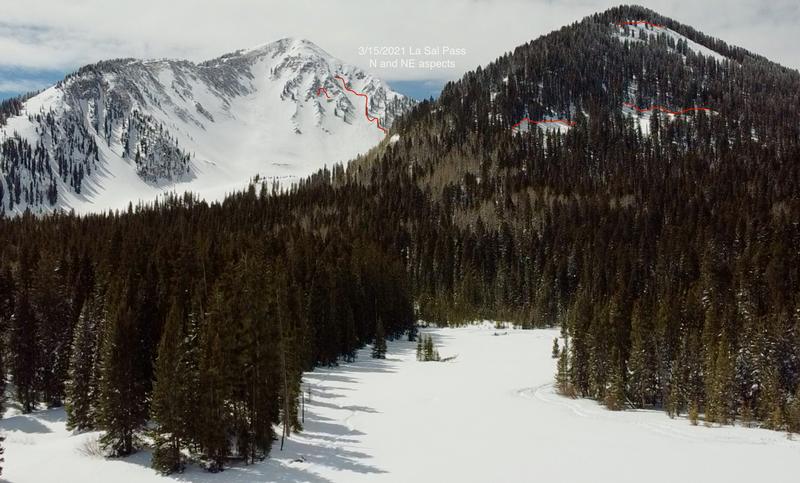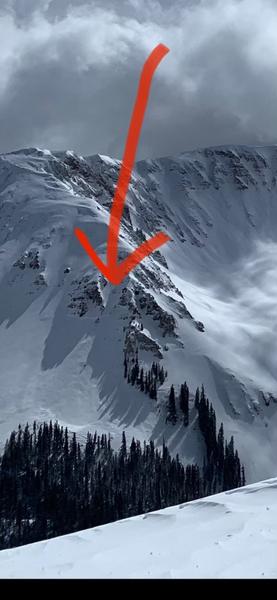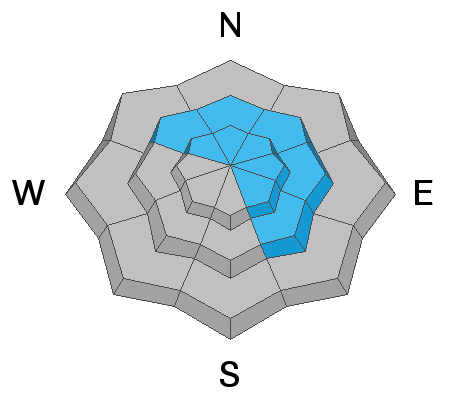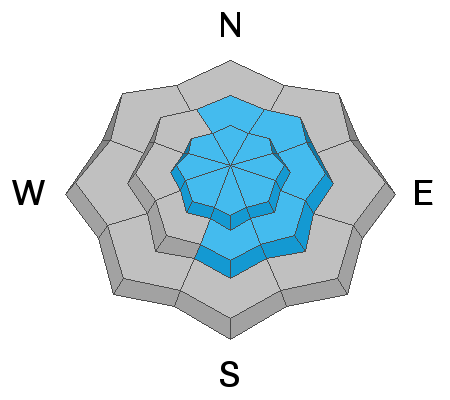The Geyser Pass Road was plowed yesterday morning and the road is snow-packed and icy. Four-wheel drive is recommended.
The Lower Utah Nordic Alliance (LUNA) has no plans to groom.
24 Hour Snow 0" 72 Hour Snow 3" Base Depth in Gold Basin 70" Wind NW 10 G23 Temp 14F
Today it will be sunny with high temperatures near 32F at 10,000'. North northwest winds from 5-10 mph. A ridge of high pressure is pushing out the fast moving low-pressure that brought clouds and a trace of snow yesterday. Conditions dry out and warm up for the remainder of the week with a weak storm for the upcoming weekend and a stronger storm on the horizon for the middle of next week.
Snowpack Discussion
Last weekend's storm brought the largest loading event of the season, with snow totals in the 2-3' range, with a significant wind event on Sunday evening where 90-mph NW winds blasted the mountains. In terms of "water-weight", this storm dumped 3.4" of SWE since Friday March 12th, which is nearly 1/3 of the entire season's total snow-water-equivalent in three days! Over the last two days, time, warm temperatures and light winds helped the snowpack adjust to this large load. Strong solar input and warm temperatures have also crusted over most aspects at lower elevations, and sunny aspects at higher elevations.
Yesterday while breaking trail at low elevations, no signs of instability were observed. Several test slopes up to 40 degrees did not produce any cracking or collapsing. Much of the lower elevation snowpack is consolidating quickly and it appears the storm snow has bonded well with the old snow.
More reports of natural avalanches that ran during the peak of instability on the 14th continue to be received. Upper elevation slopes that did not avalanche are slowly gaining strength but could still produce large and deadly avalanches under the additional weight of a rider.
With yesterday's visibility and access to the high country (Thank you Grand County Road Department!!), reports continue to describe a widespread natural avalanche cycle from Sunday the 14th. Several large
avalanches were observed Monday on northerly aspects in the La Sal Pass area that probably ran sometime on Sunday, the 14th. No avalanches were observed on southerly slopes in this area.











